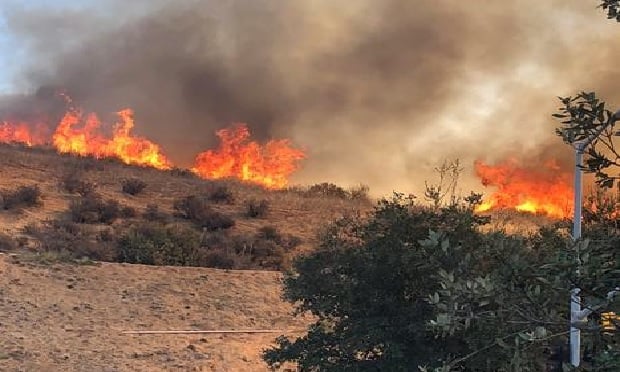 Smoke from forest fires can contain different pollutants like carbon monoxide, volatile organic compounds (VOCs) and particulate matter. The particulate is especially concerning because it can attach to surfaces, accumulate over time, and lead to staining and discoloration of susceptible surfaces. Photo: California wildfires, courtesy photo.
Smoke from forest fires can contain different pollutants like carbon monoxide, volatile organic compounds (VOCs) and particulate matter. The particulate is especially concerning because it can attach to surfaces, accumulate over time, and lead to staining and discoloration of susceptible surfaces. Photo: California wildfires, courtesy photo.
Forest fires are a natural phenomenon that occurs in many parts of the world. In recent years, however, forest fires have become more frequent and more severe due to climate change. Canadian forest fires are currently affecting states in the U.S. As of June 8 2023, cities including Washington, D.C., Philadelphia, New York, Baltimore, Buffalo, and Chicago, issued air quality alerts categorized as 'Unhealthy', due to the smoke. While the immediate effects of forest fires are devastating, the potential long-term impact can be equally severe.
Want to continue reading?
Become a Free PropertyCasualty360 Digital Reader
Your access to unlimited PropertyCasualty360 content isn’t changing.
Once you are an ALM digital member, you’ll receive:
- All PropertyCasualty360.com news coverage, best practices, and in-depth analysis.
- Educational webcasts, resources from industry leaders, and informative newsletters.
- Other award-winning websites including BenefitsPRO.com and ThinkAdvisor.com.
Already have an account? Sign In
© 2024 ALM Global, LLC, All Rights Reserved. Request academic re-use from www.copyright.com. All other uses, submit a request to [email protected]. For more information visit Asset & Logo Licensing.








